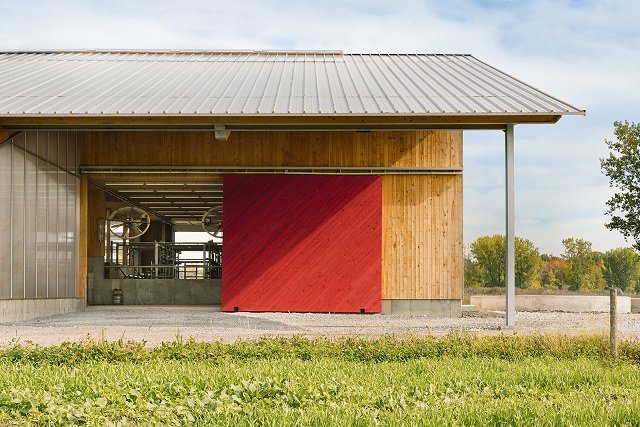
Gas turbines are widely used in various industries for power generation and propulsion systems. These machines rely on the efficient functioning of their components to deliver optimal performance. One crucial component in a gas turbine is the nozzle. The nozzle plays a vital role in the combustion process and the overall efficiency of the turbine. Therefore, regular maintenance and repair of nozzle components are of utmost importance to ensure the longevity and reliability of gas turbines.
Understanding the Nozzle in Gas Turbines
The nozzle is a critical part of a gas turbine’s combustion chamber. Its primary function is to control the flow of hot gases and direct them towards the turbine blades. The design and condition of the nozzle greatly impact the efficiency and performance of the gas turbine.
The design of the nozzle is meticulously planned to achieve the desired flow characteristics. It is usually shaped in a convergent-divergent (CD) configuration, which accelerates the gases as they pass through the nozzle. This acceleration helps in increasing the velocity and kinetic energy of the gases, resulting in more efficient energy transfer to the turbine blades.
The condition of the nozzle is equally important for the gas turbine’s performance. Any damage or deterioration in the nozzle can lead to inefficient combustion and reduced overall efficiency. It may result in a decrease in power output and an increase in fuel consumption. Therefore, regular maintenance and inspection of the nozzle is essential to ensure its optimal functioning.
In addition to controlling the flow of hot gases, the nozzle also helps in maintaining proper combustion stability by ensuring an appropriate air-fuel ratio. It prevents flashback or flameout by providing a stable flame zone within the combustion chamber.
Overall, the nozzle is a critical component of a gas turbine’s combustion chamber, significantly influencing its efficiency and performance. Its design and condition must be carefully monitored and maintained to achieve optimal operation and maximize the turbine’s power output.
The Role of Nozzle Component Repair
Nozzle component repair plays a crucial role in maintaining the performance and efficiency of gas turbines. By addressing any damage or wear in the nozzle components, repair and maintenance activities help optimize the gas turbine’s operation. Some of the key benefits of nozzle component repair include:
1. Improved efficiency: Repairing nozzle components can help restore their original shape and dimensions, ensuring proper flow and distribution of air or fuel within the gas turbine. This can result in improved combustion efficiency and overall turbine performance.
2. Cost savings: Repairing nozzle components is generally more cost-effective than replacing them entirely. By addressing any damage or wear early on, repair and maintenance activities can extend the lifespan of the components, reducing the need for frequent replacements and associated costs.
3. Enhanced reliability: Nozzle component repair helps to prevent or mitigate potential issues such as hot spots, erosion, or cracking. By ensuring that the nozzle components are in good condition, the gas turbine can operate reliably and avoid unexpected downtime or failures.
4. Increased lifespan: Regular repair and maintenance of nozzle components can help extend their lifespan. By addressing any damage or wear promptly, the components can continue to perform effectively for a longer period, maximizing the return on investment.
5. Optimal performance: Nozzle component repair helps to maintain the gas turbine’s optimal performance by ensuring that the airflow and fuel distribution are well-controlled. This can result in improved combustion, reduced emissions, and overall better turbine efficiency.
6. Compliance with regulations: Repairing nozzle components can help ensure that the gas turbine complies with environmental and safety regulations. By addressing any issues that may lead to increased emissions or safety hazards, repair activities contribute to a more sustainable and compliant operation.
Nozzle Component Repair Techniques
Repairing nozzle components requires specialized knowledge and techniques to ensure the highest quality and reliability. Some common repair techniques for nozzle components in gas turbines include:
1. Inspection and cleaning: The first step in repairing nozzle components is to thoroughly inspect them for any signs of damage or wear. This may involve using specialized tools and equipment to identify cracks, erosion, or other issues. Once the inspection is complete, the components are cleaned to remove any dirt, debris, or contaminants that could affect their performance.
2. Welding and brazing: If any cracks or other damage is found, it may be necessary to use welding or brazing techniques to repair the nozzle components. This involves carefully heating the damaged area and applying a filler material to bond the cracks or fill in any missing material. The goal is to restore the structural integrity of the components and prevent further damage.
3. Coating application: Nozzle components are often coated with protective materials to enhance their durability and performance. These coatings can help to reduce erosion, corrosion, and heat damage. During the repair process, damaged or worn coatings may need to be removed and replaced with new ones. This requires specialized knowledge and techniques to ensure proper adhesion and coverage.
4. Machining and grinding: In some cases, nozzle components may need to be machined or ground to restore their original dimensions and shape. This is done to ensure proper fit and alignment within the gas turbine system. Precision machining and grinding techniques are used to remove any excess material or imperfections and achieve the desired specifications.
5. Balancing and alignment: Nozzle components must be properly balanced and aligned to ensure smooth operation and minimize vibration. This is particularly important for rotating parts, such as turbine blades. During the repair process, the components may need to be carefully balanced and aligned using specialized equipment and techniques.
Conclusion
Nozzle component repair is essential for the optimal performance and longevity of gas turbines. By addressing any damage or wear in the nozzle components, operators can improve efficiency, enhance reliability, extend the lifespan, and achieve cost savings. Employing specialized repair techniques, such as welding, thermal spray coating, and machining, ensures the highest quality and reliability of the repaired nozzle components. Gas turbine operators should prioritize regular maintenance and repair activities to maximize the performance and value of their assets.







